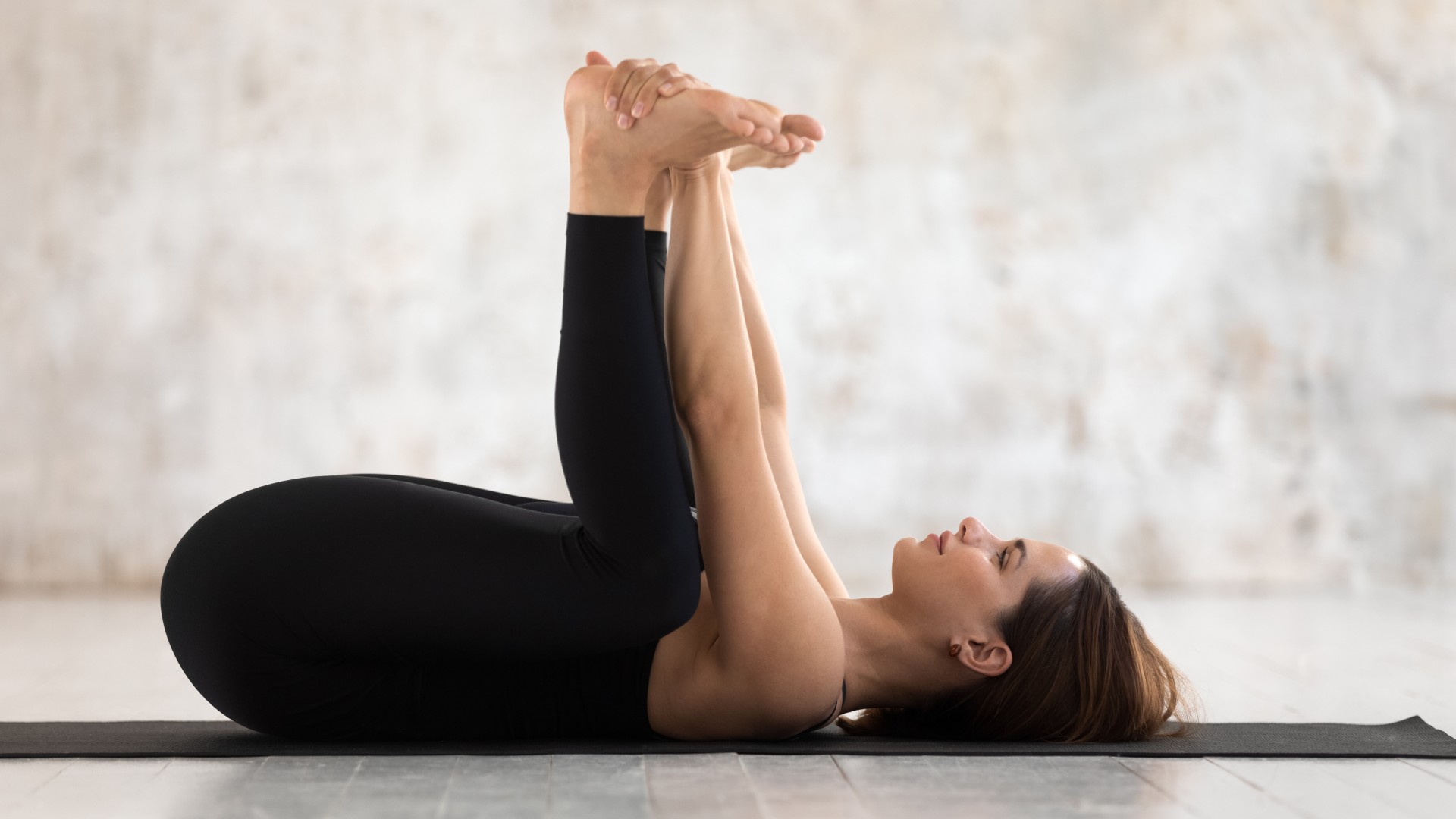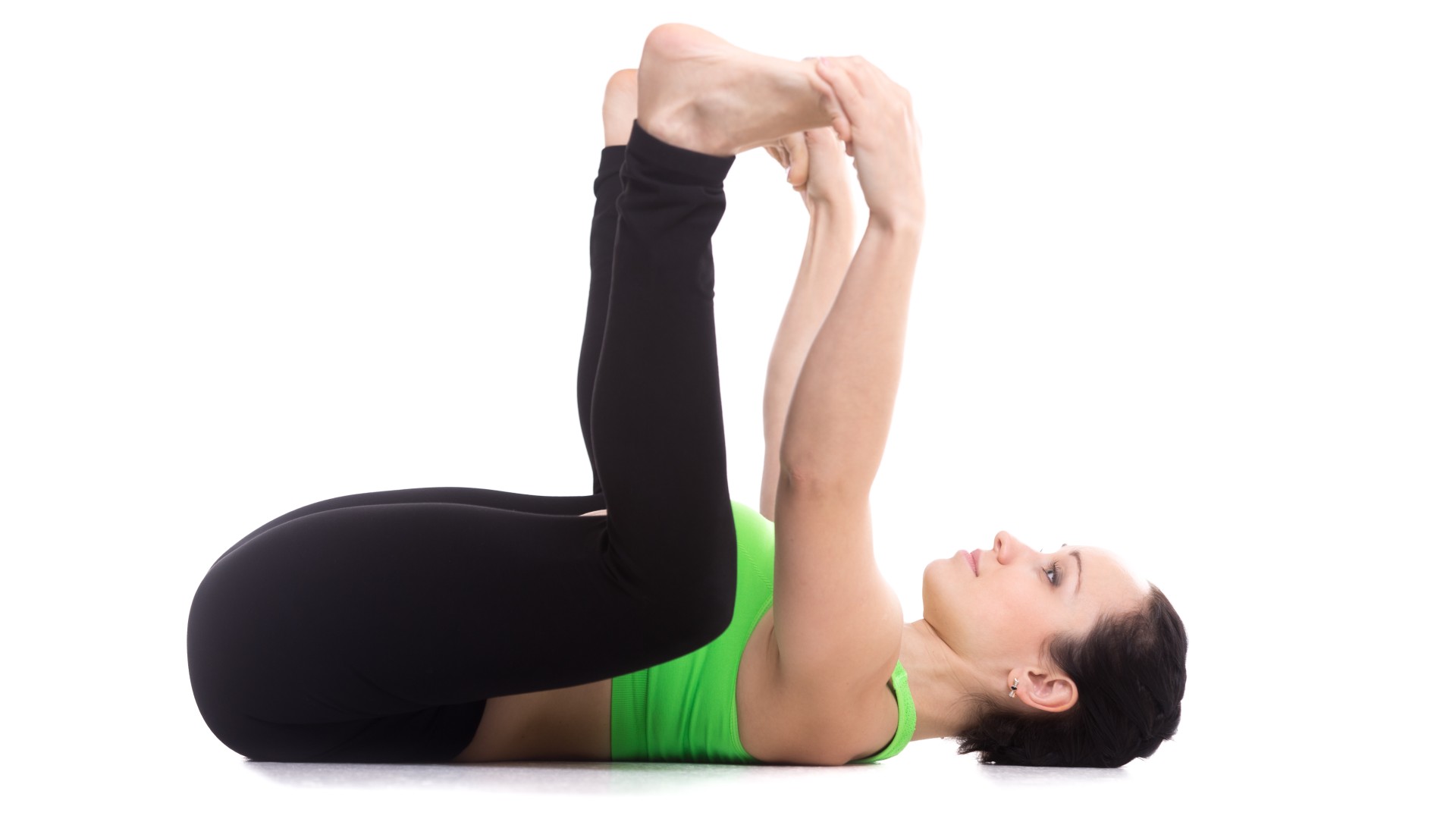
Spending time in Happy Baby is great for your hips and lower back. Sure, you might not choose the stretch in a public space outside a yoga class, but the benefits far outweigh the risk of looking a little odd. I spent three minutes stretching with the Happy Baby pose for a week, and here’s what I noticed about my body.
I wouldn’t recommend the stretch on a hard gym floor, so rolling out one of the best yoga mats will help support your lower back and spine. When using Happy Baby dynamically, I’ll move between straightening one leg at a time and both together to release tight hamstrings, or focus on static stretching after a workout to reach more deeply into my hips and relieve lower body tension.
Here’s what happened when I added the yoga pose to my daily routine.
What is the Happy Baby Pose for beginners?

Happy Baby, or Ananda Balasana in Sanskrit, is a gentle hip-opening yoga posture for most people, stretching and releasing tension from the lower back, spine, around the hips, groin and hamstrings.
It’s a floor-based exercise, so if you find it too difficult to lie down on the ground, this might not be the stretch for you. If you can hold the stretch, Happy Baby can aid pelvic floor relaxation and diaphragmatic breathing.
How to do Happy Baby pose
First and foremost, I’m not a yoga teacher. However, I have been practicing yoga for many years and have had the cues drilled into me by yoga teachers to ensure my alignment is correct. Here’s how to do Happy Baby, according to Ventuno Yoga.
Support your head on a rolled mat, cushion, or towel if you feel discomfort in your neck. Avoid lifting your upper back, neck, head, or shoulders away from the floor.
- Lie on your back and bend your knees toward your chest
- Inhale and grip the outer or inner edges of your feet
- As you exhale, draw your feet toward the ceiling so pull your knees toward your armpits
- Keep your knees bent. Your ankles should align with your knees
- Flex your feet and apply gentle pressure to your feet
- Press lightly through your whole back and engage your core
- Slightly tuck your chin toward your chest so that your spine is neutral
- Hold the stretch, then release your legs on the exhale.
Ready to give a week to Happy Baby pose, here’s what I noticed about my body afterward.
I felt deeply relaxed
In yoga, the hips are known as the “seat of emotion,” which means a storage area for stress and tension. It’s believed by many practitioners that, from an evolutionary perspective, the stress response and hip flexors share a mind-muscle connection. For example, the psoas muscle (located in your core) tightens in response to dangerous or stressful situations.
Therefore, the hips are commonly referred to as the fight-or-flight muscle. While studies have shown static stretches can relieve stress, partly through meditative breathing, the research around physically holding stress in the hips or specific muscle groups is mixed and limited.
During the three minutes, I focused on inhaling and exhaling to the count of four, directing my breath toward my stomach. Learning to use diaphragmatic breath to release tension is one of the best breathing exercises for beginners. If you find it difficult or boring to hold a stretch, breathing exercises can help you relax.
It's important to take your time
As I’ve learned over the years, and stretching over at the StretchLab, it takes time (at least 15 to 30 seconds) for muscles to relax enough into a stretch to be beneficial and boost flexibility.
That's why exercisers won't benefit much from post-workout stretches if they're quickly tacked onto the end of a session.
The body is pretty smart and has a few built-in systems to protect you during exercise and stretching. The stretch reflex or myotatic reflex can prevent you from overstretching by contracting the muscle during a passive stretch. Think of it as a fast reaction response, hence "reflex."
However, a conversation can happen between the nervous system, muscle spindles and brain for the Golgi tendon organ (GTO) to kick in once a stretch is maintained, helping to override your muscle spindles to reach a deeper stretch. Think of this as your body signalling "I'm safe."
If you’ve ever held a stretch for more than 30 seconds, notice how you can find space and a much bigger release of tension. Training both responses can build flexibility and improve muscle engagement over time.
My hips felt more open after a day of sitting
Holding any stretch for three minutes allows you time to relax and breathe, which I don’t give myself enough time to do on a busy working day.
My lower body gets tight from weightlifting, so holding the pose for several minutes felt challenging and rewarding and provided the perfect antidote to sitting at my desk and writing.
After a week of adding this exercise into my daily routine, my lower body felt more open, I had more range around my pelvis and I felt a little calmer approaching my day or heading toward bed after spending some time breathing properly.
If you want to try the stretch but have limited lower body mobility, use a resistance band or strap and loop it around your feet or practice holding the backs of your legs. I like to practice straightening one leg at a time using one of the best resistance bands for support to add a hamstring stretch.
After a week of adding this exercise into my daily routine, my lower body felt more open, I had more range around my pelvis and I felt a little calmer approaching my day.
How long should you do a Happy Baby Pose?
30 to 60 seconds should be enough for most people, but I like to use the time to practice breathwork and hold for several minutes. Those who enjoy Yin yoga may be familiar with holding postures for three to five minutes, but I recommend beginners build slowly.
Is Happy Baby Pose good for the pelvic floor?
Yoga poses and stretches focusing on the hips, pelvis and lower back and encouraging diaphragmatic breathing can improve pelvic floor activation. I mostly feel the stretch around my hips, inner thighs, groin and hamstrings, although the stretch is also designed to soothe your spine.
There are times that Happy Baby is viewed as a contraindication. If you’re pregnant, returning from pregnancy, or have issues with your neck, spine, shoulders, or knees, seek advice from a medical professional or your yoga teacher before class.
In most cases, the pose is supportive for the spine, as your lower back and neck will rest on the mat. Remember to press your tailbone and sacrum into the mat and avoid lifting your bum away from the supported position as you draw your knees downward.
I take Happy Baby often during yoga classes, but I'll certainly be adding it to my weekly regime more often.







